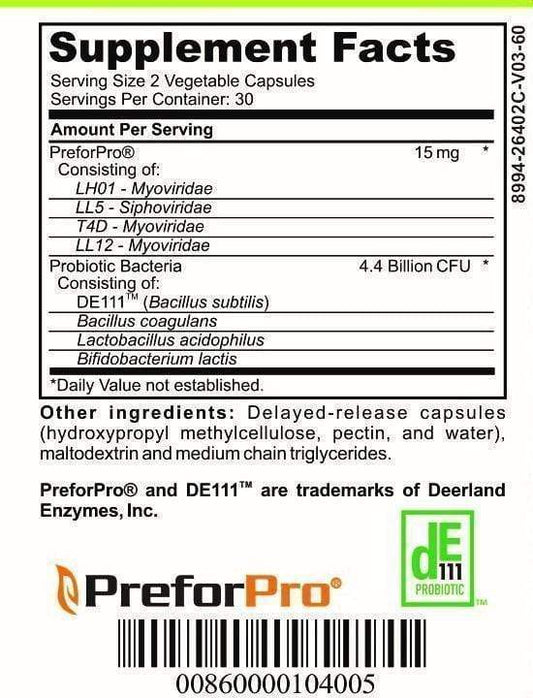What Is the Normal Range for a SIBO Test? Understanding Results
What Is the Normal Range for a SIBO Test? Understanding Results
Small Intestinal Bacterial Overgrowth (SIBO) affects millions of people worldwide, yet many struggle to understand their test results. Whether you're experiencing bloating, abdominal pain, or other digestive symptoms, interpreting SIBO test results correctly is crucial for proper treatment. This comprehensive guide will walk you through normal ranges, what abnormal results mean, and how to address SIBO effectively.
What is SIBO and Why Test for It?
SIBO occurs when bacteria that normally populate your large intestine migrate and proliferate in your small intestine. This bacterial imbalance can interfere with proper digestion and nutrient absorption, leading to uncomfortable and sometimes debilitating symptoms.
Testing for SIBO has become increasingly common as awareness of this condition grows. The most widely used diagnostic tool is the breath test, which measures hydrogen and methane gas levels produced by bacteria in your digestive system. These gases are absorbed into your bloodstream and eventually expelled through your lungs, making them measurable through breath samples.
Common Symptoms That Prompt SIBO Testing
Many people seek SIBO testing after experiencing persistent digestive issues that haven't responded to other treatments. Common symptoms include bloating (especially after meals), abdominal distension, excessive gas, abdominal pain, diarrhea, constipation, or alternating bowel habits. Some patients also report non-digestive symptoms like brain fog, fatigue, and joint pain.
If you're experiencing these symptoms, particularly if they worsen after consuming fermentable carbohydrates, your healthcare provider might recommend a SIBO breath test to determine whether bacterial overgrowth could be the underlying cause.
Understanding SIBO Breath Tests
SIBO breath tests work by measuring gas production after consuming a test substrate - typically lactulose or glucose. After fasting overnight, you consume the test solution, then provide breath samples at regular intervals (usually every 20-30 minutes) for 2-3 hours.
The test measures two primary gases: hydrogen and methane. Some newer tests also measure hydrogen sulfide, which has been associated with a specific subtype of SIBO. The pattern and levels of these gases help determine whether SIBO is present and what type you might have.
Lactulose vs. Glucose Breath Tests
There are two common substrates used for SIBO breath testing: lactulose and glucose. Each has distinct advantages and limitations. Lactulose is a non-absorbable sugar that travels through the entire small intestine, making it effective for detecting SIBO throughout this organ. However, this can sometimes lead to false positives if the lactulose reaches the large intestine during the testing period.
Glucose, on the other hand, is completely absorbed in the first few feet of the small intestine. This means glucose tests are highly specific for proximal (upper) small intestine bacterial overgrowth but may miss SIBO in the lower portions of the small intestine. Your healthcare provider will determine which test is most appropriate based on your symptoms and medical history.
Preparation for Accurate Results
Proper preparation is crucial for accurate SIBO testing. This typically includes following a specific diet for 24-48 hours before the test, avoiding certain medications (particularly antibiotics and probiotics), and fasting for 12 hours prior to testing. Failing to follow preparation guidelines can significantly impact results and lead to misdiagnosis.
Normal Ranges for SIBO Breath Tests
Understanding what constitutes "normal" results is essential for interpreting your SIBO test. While slight variations exist between laboratories and testing protocols, there are generally accepted parameters for normal and abnormal results.
For hydrogen breath tests, baseline levels are typically less than 10-12 parts per million (ppm). For methane, normal baseline levels are usually below 10 ppm. When interpreting the results over the testing period, clinicians look not just at absolute values but also at the patterns and rises from baseline.
Hydrogen Breath Test Normal Ranges
For hydrogen breath tests using lactulose, a rise of less than 20 ppm above baseline within the first 90 minutes is generally considered normal. Some practitioners use stricter criteria, considering a rise of more than 10-12 ppm within this timeframe as potentially indicative of SIBO.
With glucose breath tests, which only assess the proximal small intestine, a rise of less than 10-12 ppm in hydrogen levels throughout the test is typically considered normal. Any significant rise suggests bacterial overgrowth in the upper portion of the small intestine.
Methane Breath Test Normal Ranges
Methane interpretation differs somewhat from hydrogen. Methane levels above 10 ppm at any point during the test are often considered positive for methane-producing SIBO, also called intestinal methanogen overgrowth (IMO). Some laboratories use a cutoff of 3 ppm, while others use 10 ppm, so it's important to understand your specific lab's reference ranges.
Methane-dominant SIBO is frequently associated with constipation-predominant symptoms, while hydrogen-dominant SIBO more commonly presents with diarrhea. Many patients have mixed patterns with elevations in both gases.
Hydrogen Sulfide Considerations
Newer three-gas breath tests also measure hydrogen sulfide, which can cause distinctive symptoms including sulfur-smelling gas and diarrhea. Normal ranges for hydrogen sulfide are still being established, but levels above 3-5 ppm are generally considered elevated. This emerging area of testing provides additional insights for patients with sulfur sensitivity or specific symptom patterns.
Interpreting Abnormal Results
If your SIBO test shows abnormal results, understanding what this means is crucial for appropriate treatment. Different patterns of gas production can indicate different types of bacterial overgrowth and guide treatment approaches.
A positive hydrogen test typically indicates hydrogen-producing bacteria have overgrown in the small intestine. These patients often experience diarrhea, bloating, and abdominal pain. Elevated methane levels suggest an overgrowth of methane-producing organisms (methanogens), which frequently correlates with constipation and slower transit time.
The Significance of Gas Patterns
The timing and pattern of gas rises can provide additional diagnostic information. An early rise in hydrogen (within the first 60-90 minutes) on a lactulose test suggests SIBO in the proximal small intestine. A second peak later in the test may indicate either distal SIBO or normal colonic fermentation.
Flat-line results (no significant rise in either gas) can sometimes indicate severe SIBO with hydrogen sulfide production, rapid transit time, or recent antibiotic use that has temporarily suppressed bacterial activity. This highlights why interpretation should always be done in the context of symptoms and clinical history.
Treatment Approaches Based on Test Results
Treatment strategies for SIBO often vary depending on the type and severity indicated by breath test results. Conventional approaches typically include targeted antibiotics, dietary modifications, and addressing underlying causes that may have contributed to bacterial overgrowth.
For hydrogen-dominant SIBO, antibiotics like rifaximin (Xifaxan) are commonly prescribed. Methane-dominant cases often require combination therapy, such as rifaximin plus neomycin or metronidazole. Herbal antimicrobials provide an alternative for those who prefer natural approaches or cannot tolerate pharmaceutical options.
Dietary Support During Treatment
Dietary modifications play a crucial role in managing SIBO symptoms and supporting treatment efficacy. Many practitioners recommend low-FODMAP diets, specific carbohydrate diets, or elemental diets depending on the individual case. These approaches reduce fermentable carbohydrates that feed bacteria in the small intestine.
Digestive enzymes can also provide significant relief during SIBO treatment. Casa de Sante offers low FODMAP certified digestive enzymes specifically designed for sensitive digestive systems. Their professional-grade enzyme complex contains 18 targeted enzymes that work synergistically to break down proteins, carbohydrates, fats, and fiber, making nutrients more bioavailable while reducing digestive stress. This comprehensive support is particularly valuable for SIBO patients who often struggle with nutrient absorption and food sensitivities.
Addressing Root Causes
Successful long-term management of SIBO requires identifying and addressing underlying factors that contributed to bacterial overgrowth initially. These may include impaired motility, structural issues, immune dysfunction, or prior surgeries. Working with a knowledgeable healthcare provider to identify these factors is essential for preventing recurrence, which is unfortunately common with SIBO.
When to Retest After Treatment
Retesting after SIBO treatment helps determine whether the bacterial overgrowth has been successfully eradicated. Most practitioners recommend retesting approximately 2-4 weeks after completing antibiotic or antimicrobial treatment, allowing time for the therapy to work while minimizing the chance of recurrence before testing.
If symptoms have resolved completely, some practitioners may forgo retesting. However, many SIBO experts recommend confirming eradication through testing, as symptoms alone aren't always reliable indicators. Some patients experience symptom improvement even with persistent SIBO, while others may have lingering symptoms despite successful eradication due to post-infectious IBS or other factors.
Ongoing Support for Digestive Health
Maintaining digestive health after SIBO treatment often requires ongoing support. This may include prokinetic agents to support healthy motility, strategic use of probiotics (after successful eradication), and continued dietary awareness. High-quality digestive enzymes like those from Casa de Sante can be particularly helpful during this phase, supporting optimal digestion and nutrient absorption while the gut continues to heal.
The comprehensive enzyme blend in Casa de Sante's formula includes dual protease complex for protein digestion, amylase for starch breakdown, alpha-galactosidase for FODMAP support, and lipase for fat digestion. This targeted approach helps reduce the digestive burden during recovery and can be especially beneficial for those with ongoing sensitivities.
Conclusion
Understanding SIBO test results is a crucial step in addressing this complex condition. Normal ranges provide important guidelines, but interpretation should always consider the full clinical picture, including symptoms, medical history, and response to previous treatments.
If you're struggling with digestive symptoms and suspect SIBO might be the cause, working with a healthcare provider experienced in functional digestive disorders is essential. Proper testing, accurate interpretation, and comprehensive treatment approaches offer the best chance for resolving SIBO and restoring digestive comfort.
Remember that digestive health requires a multifaceted approach. While addressing bacterial overgrowth is crucial, supporting overall digestive function with appropriate enzymes, dietary choices, and lifestyle factors creates the foundation for long-term wellness and freedom from digestive distress.




























